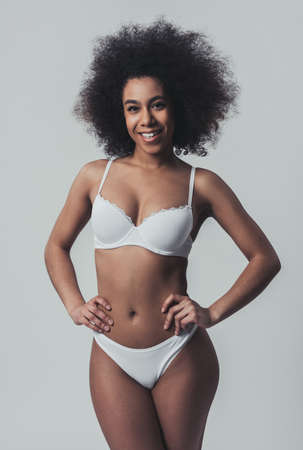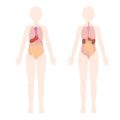Introduction to Body Contouring after Pregnancy
There’s something beautifully transformative about the journey of pregnancy, but let’s be honest – our bodies often change in ways we simply don’t anticipate. As someone who has looked in the mirror and noticed new curves, softer skin, and subtle shifts that clothes don’t quite hide, I’ve felt both pride and vulnerability. It’s a deeply personal moment when you realise your post-pregnancy figure no longer matches how you feel inside. This experience is shared by countless women across the UK, leading many of us to consider body contouring not as an act of vanity, but as a way to reconnect with ourselves. Over recent years, there’s been a noticeable cultural shift here in Britain: conversations around body contouring have become more open and supportive. Whether it’s swapping stories over coffee or seeing influencers speak candidly about their journeys, the growing acceptance reflects a collective understanding – that wanting to feel confident in your own skin is entirely natural. In this article, we’ll explore the science behind modern body contouring and examine why so many British mums are turning to these techniques to help shape their post-pregnancy figures.
2. The Science of Body Changes: Understanding Post-Pregnancy Physiology
Pregnancy is nothing short of miraculous, but it’s also a complex journey that leaves a distinct imprint on a woman’s body. As someone who has experienced these changes first-hand, I find it fascinating—and at times humbling—how our bodies adapt during and after pregnancy. Let’s explore the scientific foundations behind these transformations, focusing on skin elasticity, fat distribution, and muscle alterations.
Skin Elasticity: More Than Just Stretch Marks
During pregnancy, your skin stretches to accommodate your growing baby. This stretching is supported by collagen and elastin fibres, which act like the fabric in your favourite jumper—capable of expanding but only to a point. Some women may notice their skin “bounces back” post-pregnancy, while others are left with loose skin or stretch marks. This difference can be attributed to genetics, age, hydration levels, and how quickly the bump grew.
Fat Distribution: Nature’s Way of Preparing for Motherhood
Our bodies are clever; they know to store extra energy during pregnancy for both mother and baby. Fat tends to accumulate around the abdomen, hips, and thighs—a biological insurance policy for breastfeeding and recovery. After giving birth, this redistribution doesn’t always revert instantly. Instead, many mums find stubborn pockets of fat linger despite diet and exercise.
| Body Area | Common Change During Pregnancy | Possible Post-Pregnancy Effect |
|---|---|---|
| Abdomen | Fat accumulation & stretched muscles | Loose skin & persistent fat pads |
| Hips/Thighs | Increased fat storage | Softer contours & changes in silhouette |
| Breasts | Enlargement due to milk production | Volume loss & potential sagging |
| Waistline | Expansion as uterus grows | Lack of definition post-birth |
Muscle Changes: The Core of the Matter
One key area many new mums discuss—myself included—is the abdominal muscles. These can separate during pregnancy (a condition called diastasis recti), leaving the tummy feeling weak or protruding even months after delivery. Beyond aesthetics, this affects posture and everyday comfort.
Reflecting on my own experience, I remember feeling disconnected from my core strength, as if my body belonged to someone else. It took time, patience, and the right support to feel at home in my shape again.
Understanding these physiological changes not only grounds us in science but also reassures us that what we see in the mirror is perfectly normal. Every mum’s journey is unique—and thankfully, modern body contouring techniques are designed with this beautiful diversity in mind.
![]()
3. Modern Body Contouring Techniques
In the UK, the landscape of body contouring has evolved remarkably in recent years, offering a spectrum of options tailored to fit individual lifestyles and recovery preferences, especially for those navigating post-pregnancy changes. From my own journey and conversations with other mums, it’s clear that both non-surgical and surgical routes are becoming increasingly popular as we seek to reclaim confidence in our bodies.
Non-Surgical Innovations: CoolSculpting and Beyond
For many British women, non-surgical techniques like CoolSculpting have become the go-to solution. Imagine walking into a chic London clinic, greeted by warm staff who understand your concerns, and leaving an hour later without any downtime or need for anaesthesia. CoolSculpting uses controlled cooling to target stubborn fat cells—think love handles or the little pouch that just won’t budge post-baby. Over the following weeks, your body naturally eliminates these frozen cells, gradually revealing a more sculpted silhouette. I remember chatting with a fellow mum at a local café in Manchester who described her experience as ‘remarkably easy,’ noting she could pop in during her lunch break and get back to her day without missing a beat.
Surgical Solutions: Tummy Tucks & Liposuction
Of course, some post-pregnancy changes require a bit more intervention. This is where advanced surgical procedures like abdominoplasty (tummy tuck) and liposuction come into play. These surgeries are particularly sought after by those dealing with excess skin or weakened abdominal muscles—something many of us experience after childbirth. The process is far from one-size-fits-all; consultations with skilled surgeons across Britain ensure personalised plans that respect your unique needs and desired outcomes. From my perspective, hearing stories of women regaining their core strength—and their self-assurance—after such procedures is genuinely inspiring.
The British Approach: Personalised & Discreet
What stands out about body contouring in Britain is the deeply personal approach. Clinics from Edinburgh to Brighton pride themselves on discretion and tailored care. Whether you’re exploring gentle fat-freezing or considering surgery, practitioners take time to listen, assess your lifestyle, and guide you towards the most effective option. It’s this blend of cutting-edge science and empathetic support that makes modern body contouring so accessible—and so transformative—for today’s British mums.
4. How Technology Shapes Results
Modern body contouring has become a sophisticated blend of science and artistry, especially for post-pregnancy bodies seeking rejuvenation. British clinics now embrace advanced technologies that target specific concerns with remarkable precision, all while adhering to the highest safety standards. The focus isn’t just on slimming or tightening – it’s about nurturing confidence and delivering natural-looking results that respect your unique shape.
Aesthetic Insights into Today’s Technology
Thanks to innovations such as radiofrequency, ultrasound, cryolipolysis (fat freezing), and laser lipolysis, practitioners can tailor each treatment to the area and concern at hand. For instance, new mothers often find stubborn pockets of fat around the abdomen or loose skin that doesn’t respond to exercise alone. By understanding how each device works, you can appreciate how gentle yet effective these approaches are.
Targeted Solutions for Specific Concerns
| Treatment Type | Target Area | Key Benefit | Safety Protocols |
|---|---|---|---|
| Radiofrequency (RF) | Abdomen, thighs, arms | Tightens skin, stimulates collagen | No downtime, suitable for most skin types |
| Cryolipolysis (Fat Freezing) | Flanks, lower belly, hips | Reduces fat cells non-invasively | Clinically tested temperatures to avoid tissue damage |
| Laser Lipolysis | Chin, upper arms, stomach | Sculpts small areas with precision | Minimal discomfort, strict guidelines followed |
| Ultrasound Cavitation | Belly, thighs, buttocks | Breaks down fat through sound waves | Pain-free, customisable settings for individual comfort |
What This Means for Realistic Outcomes and Confidence
The science behind these techniques ensures results are gradual and harmonious with your body’s natural contours – gone are the days of drastic changes or tell-tale signs of intervention. Safety protocols in UK clinics meet rigorous Care Quality Commission standards; this means treatments are not only effective but also prioritise your well-being. Ultimately, this approach empowers women to feel their best post-pregnancy, knowing their transformation is both safe and authentically theirs.
5. Safety, Recovery, and Mindfulness
When considering body contouring after pregnancy, it’s natural to have questions about safety and the recovery journey. Modern techniques in the UK are designed with your well-being at heart, adhering to rigorous standards to minimise risks and ensure optimal results. It’s wise to choose a reputable clinic registered with the Care Quality Commission (CQC) and seek practitioners who are members of professional bodies such as the British Association of Aesthetic Plastic Surgeons (BAAPS). These steps offer reassurance that you’re in expert hands.
The recovery process varies depending on the procedure—be it non-surgical treatments like CoolSculpting or more traditional surgical options such as a tummy tuck. Non-invasive methods typically require little to no downtime, allowing you to quickly return to daily life, whether that’s school runs or coffee catch-ups. Surgical options may involve a longer recovery period, during which rest, gentle movement, and following post-op advice are essential. It’s important to listen to your body, avoid heavy lifting, and give yourself permission to heal without rushing.
Beyond physical care, nurturing your mental well-being is equally vital. The post-pregnancy period is emotionally charged; embarking on a transformative journey can stir up expectations and vulnerabilities. Embrace self-compassion—acknowledge the courage it takes to prioritise yourself amidst family life. Set realistic goals for your transformation; remember that everyone’s journey is unique, and comparing yourself to others can diminish your joy.
It helps to have open conversations with your practitioner about any worries or hopes you hold. In the UK, there is an increasing emphasis on patient-centred care: honest discussions about potential risks, outcomes, and aftercare plans empower you to make informed choices. Consider joining local support groups or online forums where mums share their experiences and tips—a true reflection of British community spirit.
Ultimately, body contouring is not just about changing how you look but about feeling more at home in your own skin. By prioritising safety, taking time for recovery, and practising mindfulness throughout the process, you can approach this chapter with confidence and grace.
6. The British Perspective: Cultural Nuances and Local Resources
When it comes to body contouring in the UK, there’s a distinct sense of pragmatism and understated elegance that shapes our approach to aesthetic treatments. Unlike some cultures where cosmetic procedures are openly celebrated, many Brits prefer subtlety and natural results, seeking enhancements that help them feel like the best version of themselves—without shouting about it. This ‘keep calm and carry on’ attitude is reflected not only in personal choices but also in the way practitioners communicate, focusing on realistic outcomes and patient well-being.
Understanding NHS Guidance
The National Health Service (NHS) plays a pivotal role in shaping public attitudes towards elective procedures. While body contouring after pregnancy is typically classified as a cosmetic concern and thus not routinely covered by the NHS, their official guidance offers invaluable advice on safety, risk assessment, and post-treatment care. The NHS emphasises the importance of choosing qualified professionals and encourages patients to have open conversations about expectations, recovery times, and potential complications before committing to any procedure.
Finding Reputable Clinics Across the UK
For those considering modern body contouring techniques—be it non-invasive fat reduction or surgical sculpting—choosing a reputable clinic is paramount. In the UK, look for practitioners registered with the General Medical Council (GMC) or accredited by professional bodies such as the British Association of Aesthetic Plastic Surgeons (BAAPS) or the Care Quality Commission (CQC). Many clinics offer free consultations so you can discuss your goals without pressure. Cities like London, Manchester, Birmingham, and Edinburgh boast renowned clinics staffed by experts who are sensitive to both medical standards and British sensibilities around discretion and dignity.
A Personal Reflection on Local Support
As someone who has navigated these choices myself, I found comfort in the wealth of local resources available—from online patient forums to in-person support groups for new mums exploring post-pregnancy body changes. The blend of scientific innovation with our uniquely British sense of modesty creates an environment where you can make informed decisions at your own pace. Ultimately, whether you’re seeking subtle refinement or a more dramatic transformation, the UK offers a landscape where safety, expertise, and cultural understanding come together beautifully.
7. Personal Reflections and Final Thoughts
Embarking on a body contouring journey after pregnancy is an incredibly personal decision, and having experienced it myself, I can honestly say it’s about so much more than just aesthetics. In my own story—and in listening to the voices of other women across Britain—the most profound lessons have come from embracing our bodies’ remarkable capabilities and recognising that self-care is not vanity but empowerment.
One friend shared how post-pregnancy body changes left her feeling disconnected from her sense of self, yet through modern contouring techniques, she rediscovered confidence and pride in her silhouette. My own experience mirrored this; the process allowed me to celebrate my postnatal body’s resilience rather than mourn its differences. The science behind today’s techniques gave us both reassurance: these aren’t drastic measures, but rather thoughtful enhancements grounded in safety and innovation.
In contemporary British society, where conversations around body positivity are louder than ever, choosing body contouring isn’t about conforming to impossible standards—it’s about making empowered choices for oneself. The camaraderie I’ve felt in online forums and local mum groups has been heartening; we cheer each other on, share recovery tips, and remind one another that our value is never dictated by dress size or stretch marks.
If you’re considering this path, let my story—and those of countless women who have gone before—be an encouragement. Take time to research your options, consult with trusted professionals, and listen to your own instincts. There’s no “right” way to feel comfortable in your skin, but there are safe, scientifically-backed routes to help you get there if you choose.
Ultimately, modern body contouring in Britain reflects a wider shift: we are redefining what it means to look after ourselves as parents and individuals. By blending science with self-compassion, we’re creating new narratives—ones that honour both our journeys into motherhood and our right to feel beautiful in every stage of life.


